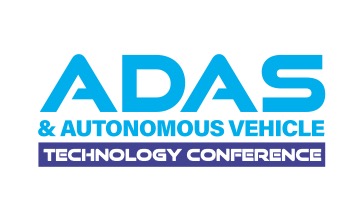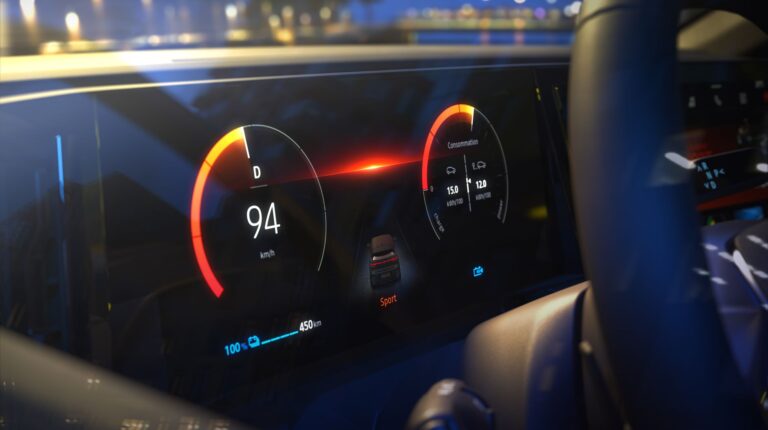At this year’s conference in Stuttgart (May 20, 21 & 22), Xavier Chalandon, HMI expert leader at Renault, will propose a structured overview of human factors challenges in vehicle automation, from driver assistance systems (ADAS) to automated driving (AD). Xavier sat down with AAVI to reveal more, beginning with the fundamentals and importance of ergonomics:
What is ergonomics?
Ergonomics is a scientific discipline concerned with the understanding of interactions among humans and technical systems, and a human-centered design approach to technology adoption.
What are the challenges in vehicle automation and system ergonomics?
When it comes to vehicle automation, there are as many human factors issues inside the vehicle as outside it. Not only must the automation be operated easily by the driver, but the joint driving behavior must safely integrate within the road system.
What is system ergonomics screening in relation to vehicle automation?
Ergonomics screening is a systematic way to tackle systemic issues in human-machine coupling. As such, it is to be seen as part of SOTIF analysis (safety of the intended function), with a dedicated focus on human factors.
What are the issues in automation of driving, co-action and situation awareness?
In automated driving (AD), there are two main challenges:
- Co action: the AD behavior must be part of a complex network of relations with other road users, sharing the same resource (the road) without common goals and with implicit means of coordination such as hands or vehicle body gestures;
- Situation awareness: if AD requires the driver to take over control, especially under time constraints, the issue is not control of the vehicle per se but cognitive control of the driving situation prior to acting in context.
Why is system ergonomics important in vehicle automation?
At the system level, balancing safety and performance is always contextual. Context specifies the unsafe events to be faced and the expected performance to be achieved. Ergonomics sheds light on the key aspects of human factors in defining the operational domain and system logics.
How does the human-machine interaction benefit the end user/customer?
At the cockpit level, HMI is key not only to ensure the usability of operation but also to enhance mode awareness – the transparency of automation status, capabilities and transitions. AD presents new challenges to balance the benefits of non-driving life on board with the necessity of a safe takeover process.
What are the key challenges of most advanced ADAS, such as ‘feet off, hands off’?
If we are in the world of assistance and not AD, the driver retains responsibility for driving. There is no strong commitment to the automated system warning the human to take control in all events of safety problems, so the intended behavior is ‘eyes on’. Consequently, the challenges are two-fold. From a symbolic point of view, such possible bodily disengagement may blur the responsibility sharing, which is part of the ‘modes awareness’ issues. From a cognitive perspective, humans aren’t very good at sustaining attention while watching a process without taking any action, which is part of the ‘situation awareness’ issues.
To mitigate those points, design takes care of the context definition to maximize the detection of events, and emphasis is put on the communication to the driver and the driver monitoring to ensure cognitive driving engagement.
What is Renault’s approach to addressing these challenges?
We use a mixture of resources: human factors analytic approach, human-in-the loop simulations, test drives, open road studies and so on – including longitudinal studies of the adoption of driving aids.
The important thing is not to take too serial an approach but rather to recruit these different resources in parallel to make the analyses robust and feed each other.
How does human factors applied to automotive differ to aviation/aeronautics?
Driving a car and flying an airplane belong to the same family of cognition in a dynamic and risky environment. There are common themes such as attention-related issues (situation awareness, vigilance, mind wandering), decision-making under time constraints and, increasingly for driving, mode awareness, which is a long-lasting ergonomics issue in aeronautics automation.
Of course, there are major differences concerning variabilities of skills and training, and emerging versus rule-based safety, especially for commercial aviation.
But in the end, what is striking is that although a plane goes faster than a car, the driving interactions are much faster than the piloting interactions – the synchronization time constant is about seconds, not tens of seconds or minutes.
Why did Renault choose to speak on this topic at ADAS & Autonomous Vehicle Technology Expo Europe and why is it important at this time?
It is often said that the human factor is involved in or responsible for 80-90% of accidents and therefore that automation will be the ultimate solution to that issue, but this is the dark side of the coin. Thanks to their adaptation capabilities, human drivers avoid accidents in complex environments; this is why automation of driving is not simple.
So, once again, this is all about contextual balance between safety and performance.
Who are you hoping will benefit from this insight?
I’m hoping to provide a glimpse into the ergonomics field as applied to automation, to enhance the fruitful dialog between human factors and system engineering.
What takeaways can the audience expect from the presentation?
It may seem counter-intuitive, but unless you have perfect automata in a controlled context, the more automation you have, the more human factors you need.
 Xavier Chalandon has led the human-machine interaction and interface expertise network at Renault since 2011. This expertise area covers user experience and HMI engineering. From 1990 to 2005, he held several positions at Dassault Aviation within the field of human factors applied to aeronautics. He joined Renault in 2006 as manager of human factors research activities. He has an engineering degree in aeronautics, an MSc (Stanford) and a PhD in cognitive ergonomics.
Xavier Chalandon has led the human-machine interaction and interface expertise network at Renault since 2011. This expertise area covers user experience and HMI engineering. From 1990 to 2005, he held several positions at Dassault Aviation within the field of human factors applied to aeronautics. He joined Renault in 2006 as manager of human factors research activities. He has an engineering degree in aeronautics, an MSc (Stanford) and a PhD in cognitive ergonomics.
Xavier’s presentation will be part of the ‘Safety requirements and demonstration: validation and tooling with a L2+ L3 focus’ conference session on Wednesday, May 21, 2025.
Hear from Renault, Porsche Engineering and Stellantis during this session at the Messe Stuttgart – click here to secure your conference pass (early-bird rates apply until April 10).



